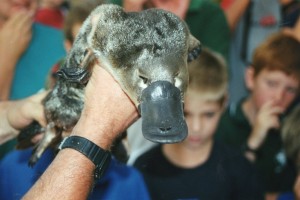We are familiar with doctors treating patients, but have you ever thought about who is responsible for treating the entire population of British Columbia? You may have gone to the doctor for a flu vaccine, but have you ever thought about what goes into the production and administration of that vaccine? For example, which types of flues are you vaccinated against? What parts of the population receive the vaccine and why?
Governments spend billions of dollars each year on health care, but their greatest challenge is in deciding how exactly to spend that taxpayer money. In British Columbia, we elect a provincial government which is responsible for running the Ministry of Health. It is ultimately up to these Ministry officials to organize and operate the provincial health care system. These are the health care policy makers.
These policy makers have to make decisions which have the potential to affect us all. They ensure that enough doctors and nurses are trained each year to treat the escalating needs of an aging population. They decide how many MRI, CT or PET machines should be purchased and where they should be located. They identify specific unhealthy lifestyle habits to educate the public about.
However, these policy makers are not alone in trying to figure out how to best spend tax payers’ money. There are many professions and disciplines which build upon the body of knowledge that policy makers use to make informed decisions regarding health care spending. These include frontline clinicians who interact with patients on a daily basis or hospital administrators who manage the daily costs of their facility.
Not all of the contributors to health care policy work in hospitals. Many of these individuals work on computers from offices. Economists are important when it comes to figuring out how to best spend a finite sum of money. In particular, they provide cost-avoidance analyses which help determine how to best spend money to get the most bang for your buck. There are also people who specialize in creating business plans for health care programs, systems and technologies. Researchers at universities across the nation review the academic literature on all manner of diseases, risk factors, lifestyles and disabilities. They figure out how these aspects of health care affect the whole population and how to best treat or deal with them.
Many of these “office jobs” are performed by private sector health care consulting companies. These organizations come in all shapes and sizes, such as H. Krueger and Associates, Inc. This small consulting company specializes in business plans and economic analyses which are central to the decision making process of health care policy makers.
Audio clip: Adobe Flash Player (version 9 or above) is required to play this audio clip. Download the latest version here. You also need to have JavaScript enabled in your browser.
One method of analyzing and understanding the progression of disease or illness is though modeling. Health care models are representations of one aspect of health care. They are used to better describe, understand and predict the process of a problem and its consequences. For example, the cost-effectiveness of a human papillomas virus (HPV) vaccine could simply be described in an Excel spreadsheet. Sequential layers of increasing complexity and number of assumptions describe the natural history of the disease, effectiveness of the vaccine and costs of implementing a vaccination program.
Models come in all shapes and sizes from a variety of fields of study. They include statistical models, like the following probabilistic model of UBC statistician, Dr. Alexandre Bouchard-Côté.
https://www.youtube.com/watch?v=kl_5X9Dqrtk&feature=youtu.be
Sources:
Alexandre Bouchard-Côté’s Website. http://www.stat.ubc.ca/~bouchard/ (accessed April 4, 2012)
British Columbia Ministry of Health. http://www.gov.bc.ca/health/ (accessed April 4, 2012)
Erik J. Dasbach, Elamin H. Elbasha, and Ralph P. Insinga. Mathematical Models for Predicting the Epidemiologic and Economic Impact of Vaccination against Human Papillomavirus Infection and Disease Epidemiol Rev (2006) 28(1): 88-100 first published online June 1, 2006
H. Krueger & Associates, Inc. www.krueger.ca (accessed April 4, 2012)













